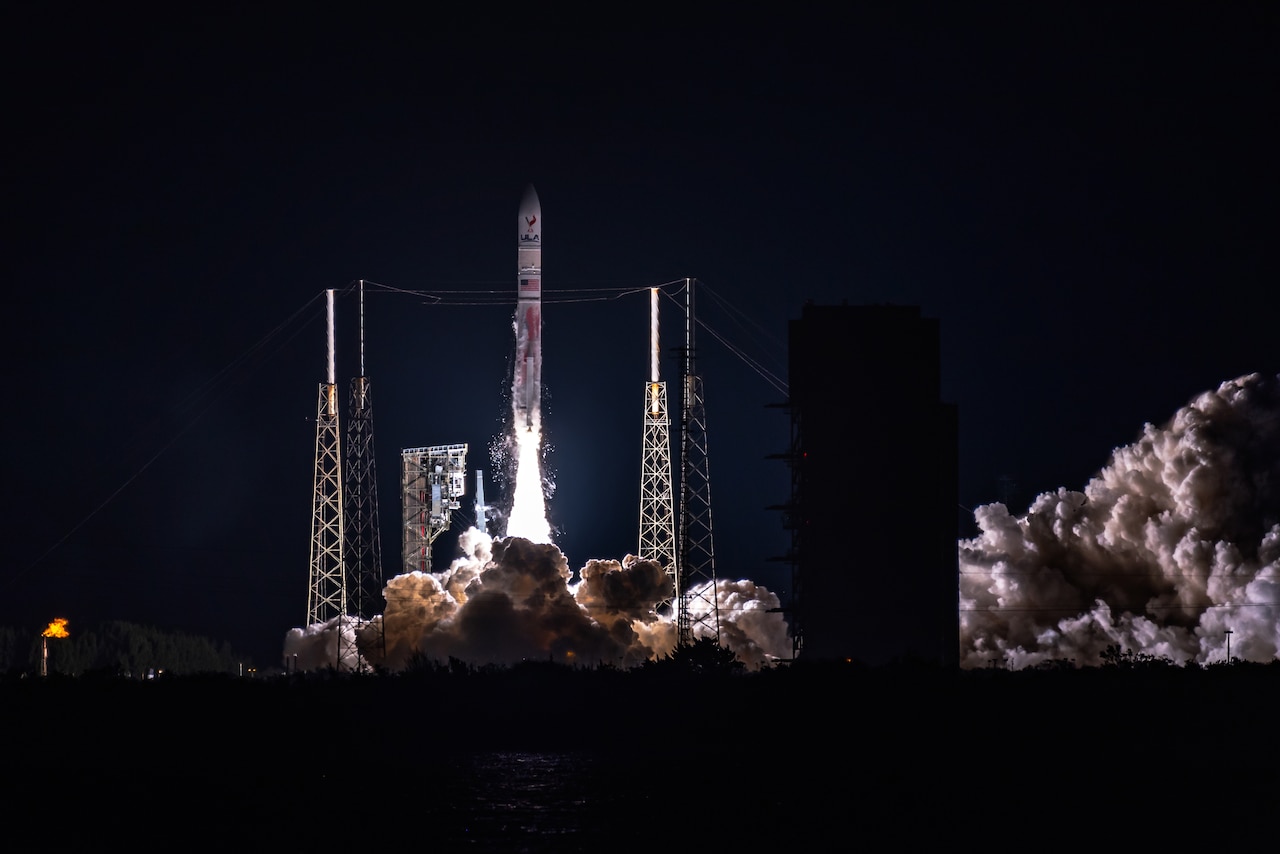During fiscal year 2025, the Space Force will continue to invest in areas key to obtaining a warfighting posture despite a proposed 2% downturn in next year’s budget, according to the agency’s chief of space operations.
While discussing the current state of the Space Force during a broad-ranging, half-hour interview with Defense One yesterday afternoon, Gen. Chance Saltzman said the approximately $600 million reduction from the Space Force’s FY 2024 budget isn’t holding the agency back from focusing on areas necessary to face off against potential adversaries.
“We are still investing heavily in resilient architectures to make sure we can continue to provide missile warning, satellite communications and precision navigation and timing,” Saltzman said, adding that the Space Force has also invested heavily in operational tests and training infrastructure to make sure the service’s personnel, known as Guardians, have proper training to face potential threats on the horizon.
“There [are] lots of areas that I feel very comfortable that we’ve plussed-up and that we’re increasing to make sure we can meet all the requirements,” Saltzman added.
The FY 2025 Space Force budget request for $29.4 billion is down from the FY 2024 request for $30 billion. The reductions come in the areas of research, development and testing and evaluation, along with procurement.
The Space Force budget is included in the overall Department of the Air Force budget. According to the Air Force, the FY 2025 Space Force budget request “focuses on comprehensively fielding equipment and trained Guardians with sufficient sustainment funding to conduct prompt and enduring operations against any adversary. It presents major investments in fielding combat-ready forces for a growing and maturing service.”
Along the lines of “comprehensively fielding equipment,” the $4.7 billion FY 2025 budget request for procurement is $400 million less than last year’s. However, requesting less money in that department isn’t necessarily indicative of a problem, according to Saltzman.
“I don’t think there’s a particular problem, he said. “It’s just the timelines that come with us estimating what we’re going to need in the future.”
To illustrate this, the general pointed out that the Space Force purchases some of its rockets for launching satellites two years in advance, and planning for the acquisition of those rockets takes place even further out from the purchase date.
“And, so, as we get closer to execution, we modify and refine those [budgetary] estimates to make sure that we don’t buy anything that we don’t need or can’t use,” Saltzman said. “And that’s what you’re seeing this year.”
On the topic of Space Force Guardians, whose portion of the budget request remained unchanged from the last fiscal year, Saltzman said the Department of the Air Force recently announced a re-optimization plan that focuses on training-up the Space Force personnel to be at the highest level of readiness standards.
“We want to develop advanced training,” Saltzman said. “We’re re-scoping all the education, training and experience opportunities to make sure our Guardians are ready.”
“I want to put tools in their hands this year, so they can start to practice, [so] they can ask questions of themselves rather than forwarding questions all the way up to the leadership, [so] they can solve problems at their level,” Saltzman continued. “They’re hungry for it, and I’m just trying to take advantage of that this year.”
The Space Force’s $29.4 billion proposed budget for FY 2025 is the smallest request of the U.S. armed forces, with the overall Air Force request being $217.5 billion. The Army is requesting $185.9 billion, and the Department of the Navy—including the Marine Corps—is requesting $255.7 billion.
The White House made President Joe Biden’s proposed DOD budget for FY 2025 public on Monday. Congress will now spend the coming months legislating over authorizations and related appropriations.





















Discussion about this post